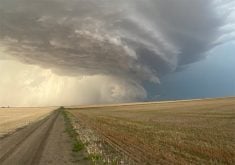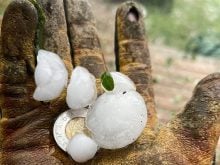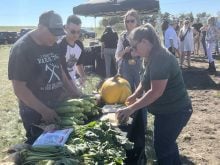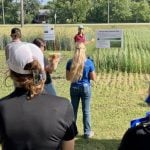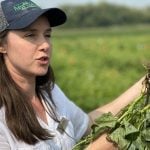Over the last several years, weed scientists have repeatedly said that new chemistries will be needed in the near future to combat the burgeoning challenge of herbicide resistance.
While the industry searches for the next silver bullet, a few agro-chemical companies are looking to the past to solve the present day riddle of resistance, says Dean Riechers of the University of Illinois.
Dow AgroSciences, for example, is developing a new product that features one of the oldest weed controls on the market— 2,4-D.
Read Also

Factors that can cause heavy rainfall
There are several factors that can contribute to an extreme rainfall event, the first is atmospheric moisture.
“It’s kind of an interesting idea…. It’s making genetically modified crops but using herbicides that have been around for a long time,” said Riechers, an associate professor in crop science who specializes in herbicide resistance.
Dow AgroSciences is promoting Enlist, a product under development that will combine glyphosate with a new choline formulation of 2,4-D different from amine and ester formulations. The product will work in combination with crops that have genetic tolerance to the chemistry.
“Dow Agro told me they are going to release a GM (genetically modified 2,4-D) corn in 2013,” Riechers said, followed by soybeans and cotton. “You can use 2,4-D in corn right now but a lot of farmers don’t because it tends to drift…and injures the corn crop. Sometimes the stalks get brittle.”
The challenges of drift and crop damage with the old 2,4-D, which limited its use, are supposedly resolved in the new version, Riechers said.
Adding 2,4-D to the mix should buy modern agriculture some time on herbicide resistance, he noted, because it is an auxin herbicide.
“We know a lot about 2,4-D… and it has a very complicated mode of action,” he said, which means weeds will have to work harder to develop resistance.
In addition, auxins have historically been mixed with other herbicides, thereby reducing the risk of resistance.
“I’m not sure it’s going to be this way forever. But for the time being resistance to 2,4-D and Dicamba in the U.S. Midwest isn’t really a big problem.”
Although it remains in development and needs regulatory approval, a product like Enlist is needed because farmers in many parts of the U.S. are losing the fight against glyphosate resistant weeds like waterhemp, Riechers noted.
“The biggest problem with glyphosate resistant weeds is in the southeast U.S., where they grow cotton continuously,” he said.
“So I think that will be a major market for this technology…. It’s going to have more of a benefit in cotton and soybeans (because) we don’t have as
many options for controlling waterhemp in those two crops.”
Glyphosate resistant giant ragweed and horseweed have been confirmed in Ontario. But, overall, Canadian farmers have fewer problems with glyphosate resistance than producers south of the border.
Nonetheless, producers will need to alter their practices. Otherwise, it will become a major migraine for Canadian agriculture, said Ken Sapsford, University of Saskatchewan weed expert.
“In the past decade a lot of us, including myself, have said why spend extra money on these new (herbicides with multiple modes of action). Just up the rate of glyphosate. Which is not what we should be saying these days because of the resistance issues.”
According to research by Hugh Beckie of Agriculture Canada, kochia will likely be the first weed to develop resistance to glyphosate in Western Canada.
Yet, if producers are proactive, the resistance could be delayed, Sapsford noted, because there are products on the market, right now, which combine other modes of action with glyphosate.
“By using products like Cleanstart or Heat, or any product that will control kochia in combination with glyphosate, you’re helping to avoid that resistance from developing.”
The million-dollar — or more likely the $100 million —question is, are Canadian farmers spending more on the combination products now, to save money in the future?
Although he didn’t know the answer to that question, Sapsford said scientists and crop extension professionals are spreading the word on the importance of multiple modes of action.
“The message is getting out there,” he said. “But I’m still seeing a lot of product go down as a single mode of action.”
What is water hemp?
•The annual plant comes from the pigweed family (Amaranthus rudis) and grows between two and eight feet high.
•Little seeds are produced in great abundance and can persist through the winter. The foliage can accumulate high levels of nitrates so it can be toxic to livestock when eaten in abundance.



